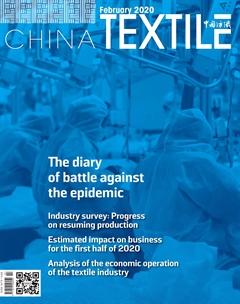Estimated impact on business for the first half of 2020


While business is restarted on limited basis here and there, the impact on the companies in the Questionaires in the first half of the year is not ambiguous if we just see some of the important indicators like business income, profits, employment and export.
Impact on employment
Employees are the creams of the crop in terms of corporate valuable assets even though the progress of modernization and digitalization driven by AI technology is cannibalizing human jobs. 9.5% of the companies in the Questionaires think that there is no impact on their employment, but there is a bulky share of the companies in difficulty in recalling back their workers in time of coronavirus freaking, as is manifested by the 21.9% of the respondents reporting over 30% laborer loss and 44.1% of the companies with reduced employment by 10% - 30%, and 24.5% of the Questionaires participants expected to have less than 10 percent loss of their operators as compared with the same period last year.
In segmental view, we see more loss of workers in garment, knitting and bast textile sectors, rating at 31.6%, 30.9% and 30% respectively. Obviously, the smaller the company is, the less employment the company is handicapped with, it is not the magic spell, but the law of the jungle.
Impact on business income
The first half of the year will see a reduced income by more than 20% in 65.2% of the questionaired companies, and by 10% - 20% in 24.5% of the respondents under survey, as businesses are hard to rehabilitate to the full potential with uncertainties still struggling in two minds whether to take in more orders while workers are not yet available in full number or to wait with inadequate capacity kept running until the situation turns out to be better.
Impact on export estimation
Chinas export from textile industry constitutes around 36 percent of the global outbound shipments in this trade sector, regardless of its increased investment in overseas operations in low-income countries largely in Southeast Asia, Africa etc. The labor cost rise might be one of the important drivers for outgoing investments, resulting in year-on-year decrease of the textile and apparel export that registered USD 280.7 billion last year with a slight drop at 1.5%, but significantly 5.3 percentage points down as against the year before. In spite of the export slowdown, it is still an important pillar that supports the whole textile economy. The impact as induced by the novel coronavirus on the export business is much of a growing worry if the indicator continues to remain as it chalks down in the Questionaires.
83.6% of the knitting companies, 75% of the silk textile manufacturers, 73.7% of the bast textile mills and 72.5% of wool textile enterprises responded to say that they would fall by over 10 percent in export as opposed to the first half of last year. 54% of all the companies in the survey report said that they would meet over 10% down in their export business, some silk companies in particular, reported to say their shipping out business would be cut by half, consequently.
The article is provided with data taken from the analysis report on the basis of online nation-wide Questionaires with 1,201 respondents. The impact on the textile industry is given in three phases as stated previously to cover the period from the start of New Year to the middle of February, and the period all the way down to the end of the month, and the longer period for the first half of this year. The picture looks a bit gloomy as the survey report came out on February 13th, amid rising cases of symptoms suspected or confirmed for the novel coronavirus, to which people are susceptible if company owners waywardly summon workers back to work. The whole situation starts to look pretty sunny as the new symptomatic cases of the disease continue to drop over 16 days across the country. More and more people take on journey back to job on meticulously-arranged basis, business will return to not where we are, but to where we aim higher. Out of the distress of dark tunnel, we walk into the hope of sunshine.
- China Textile的其它文章
- Dear readers
- The diary of battle against the epidemic
- Duan Xiaoping:Firm confidence,adapt to change,win in the future
- How is the progress of all industries in the second week of resumption of work?
- Industry survey:Progress on resuming production
- Survey on the work resumption of 4,650 enterprises in 19 clusters of cotton textile enterprises

